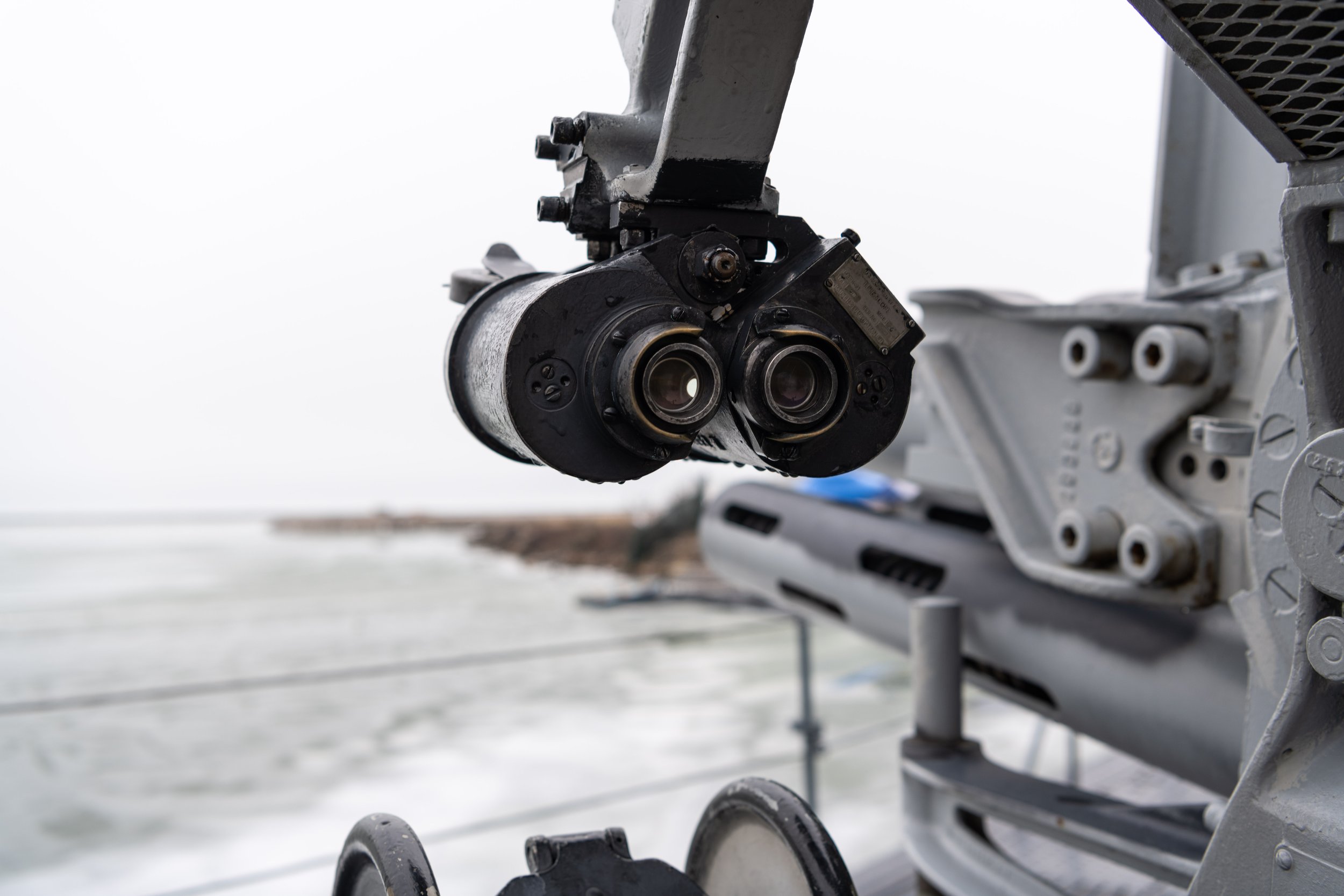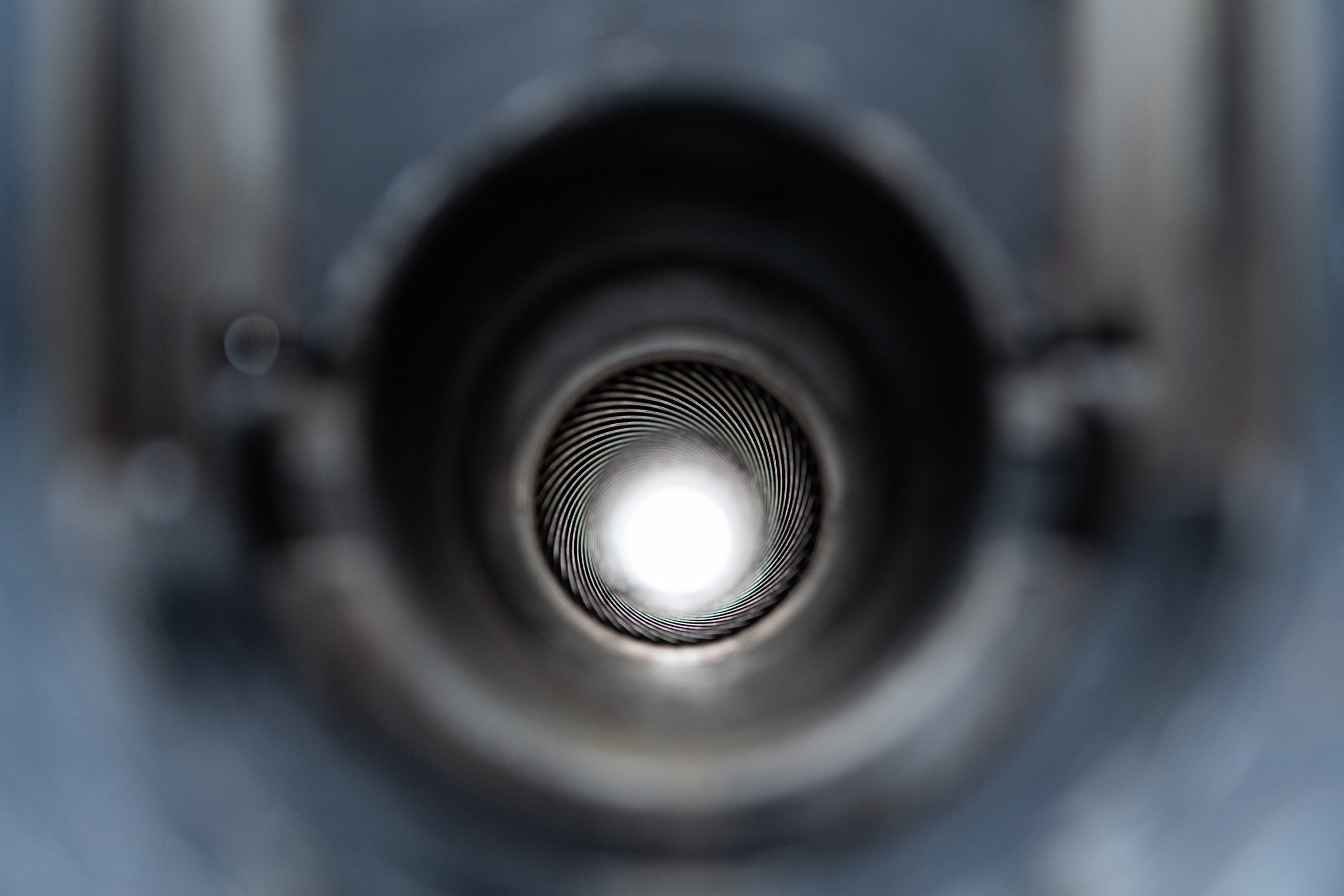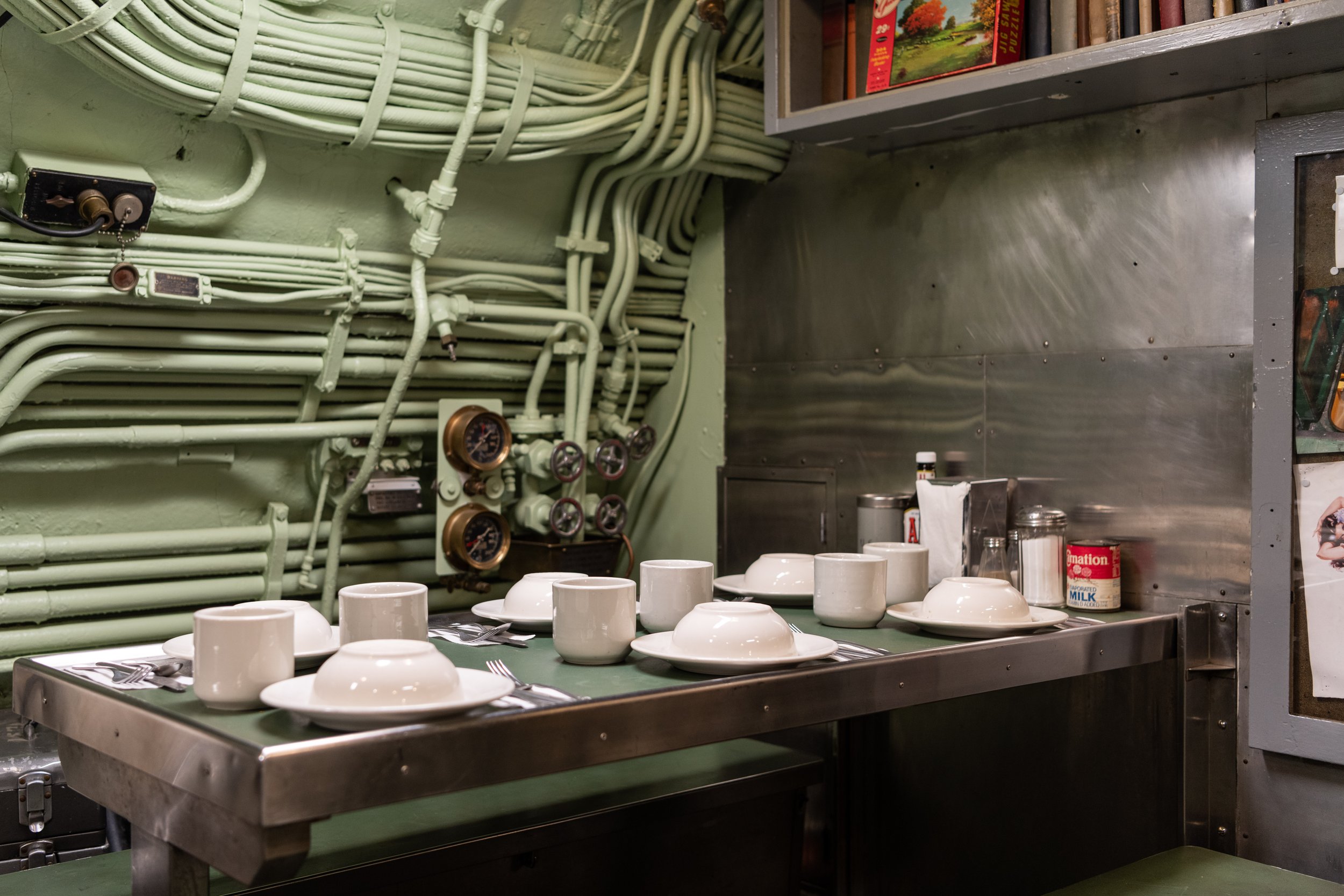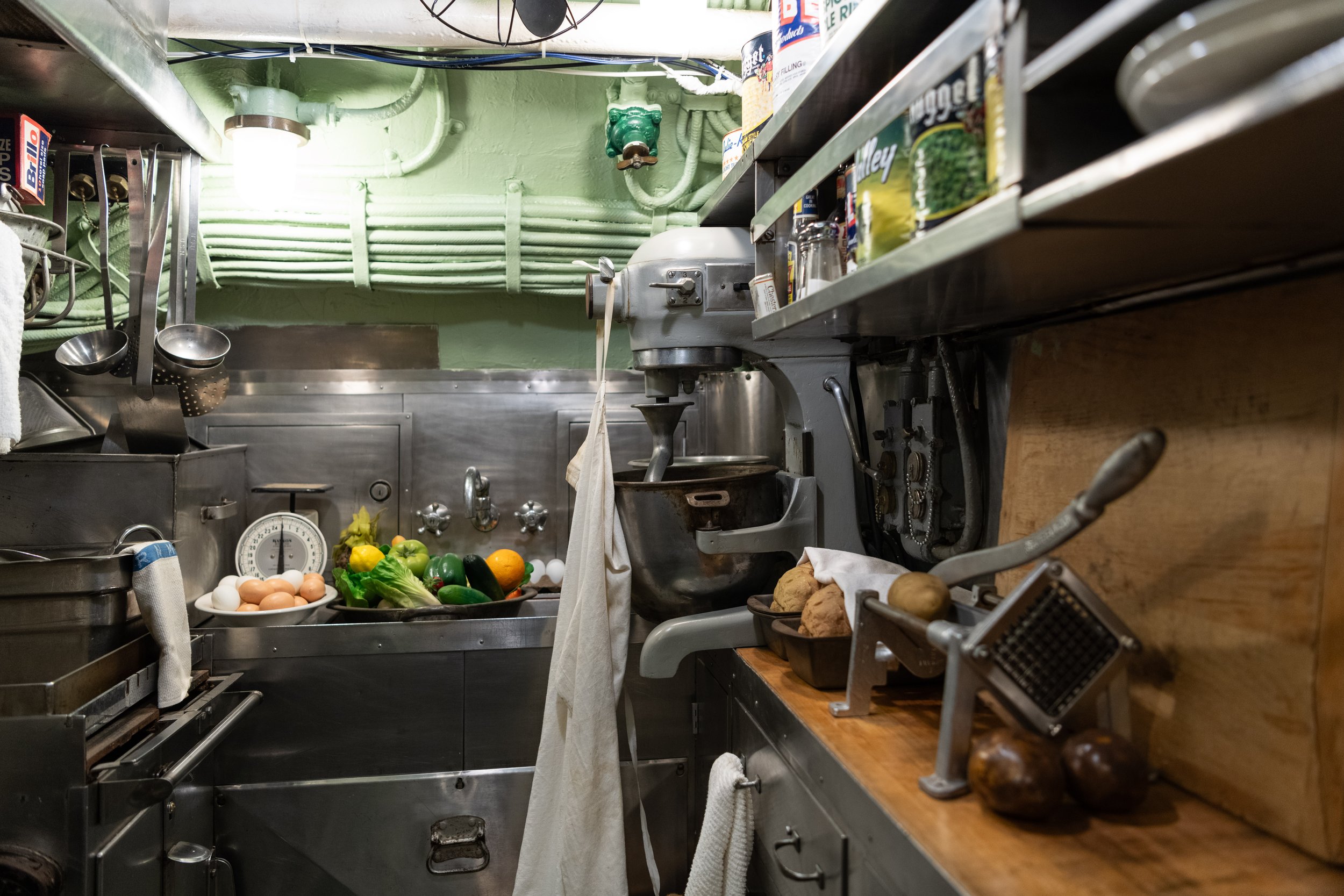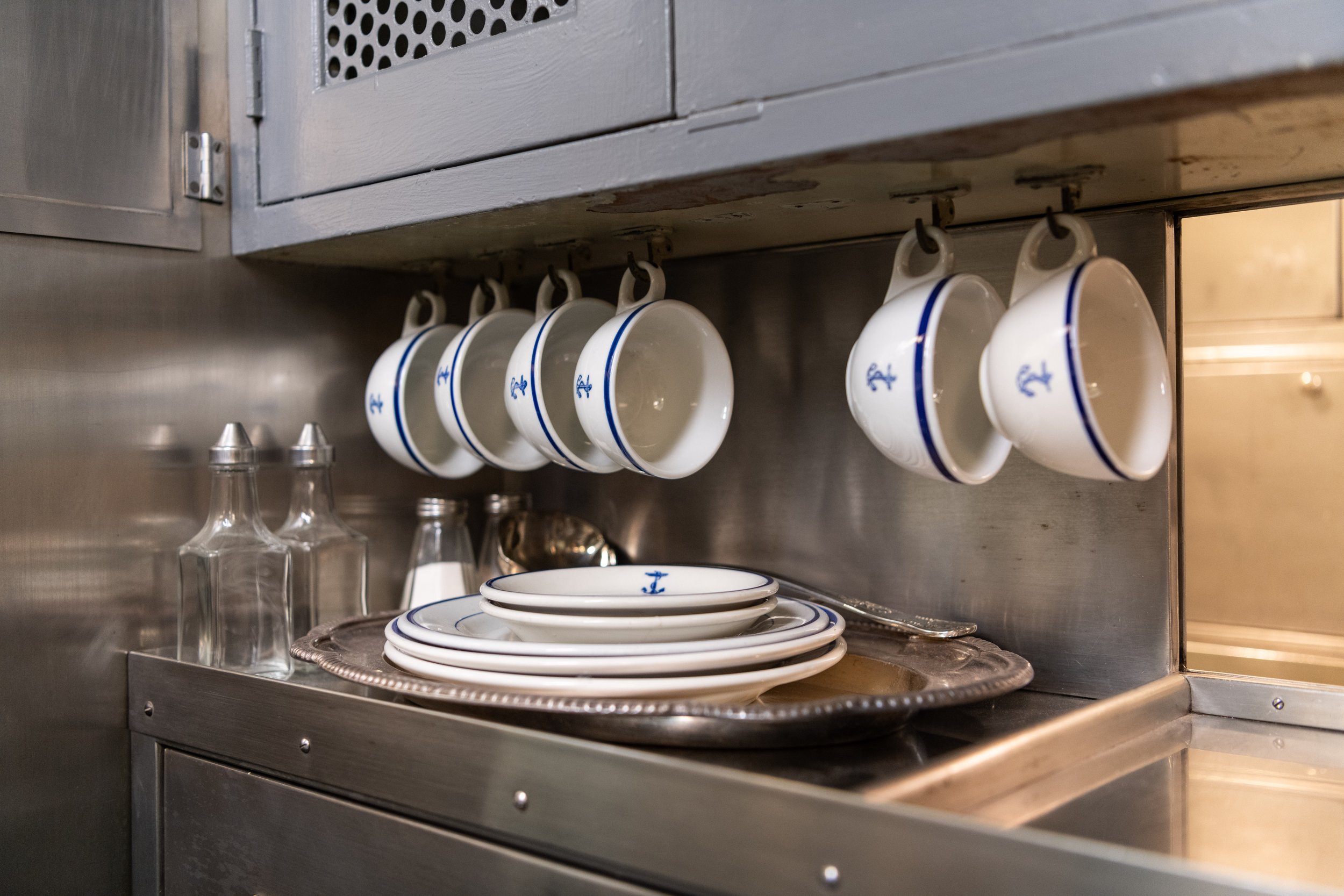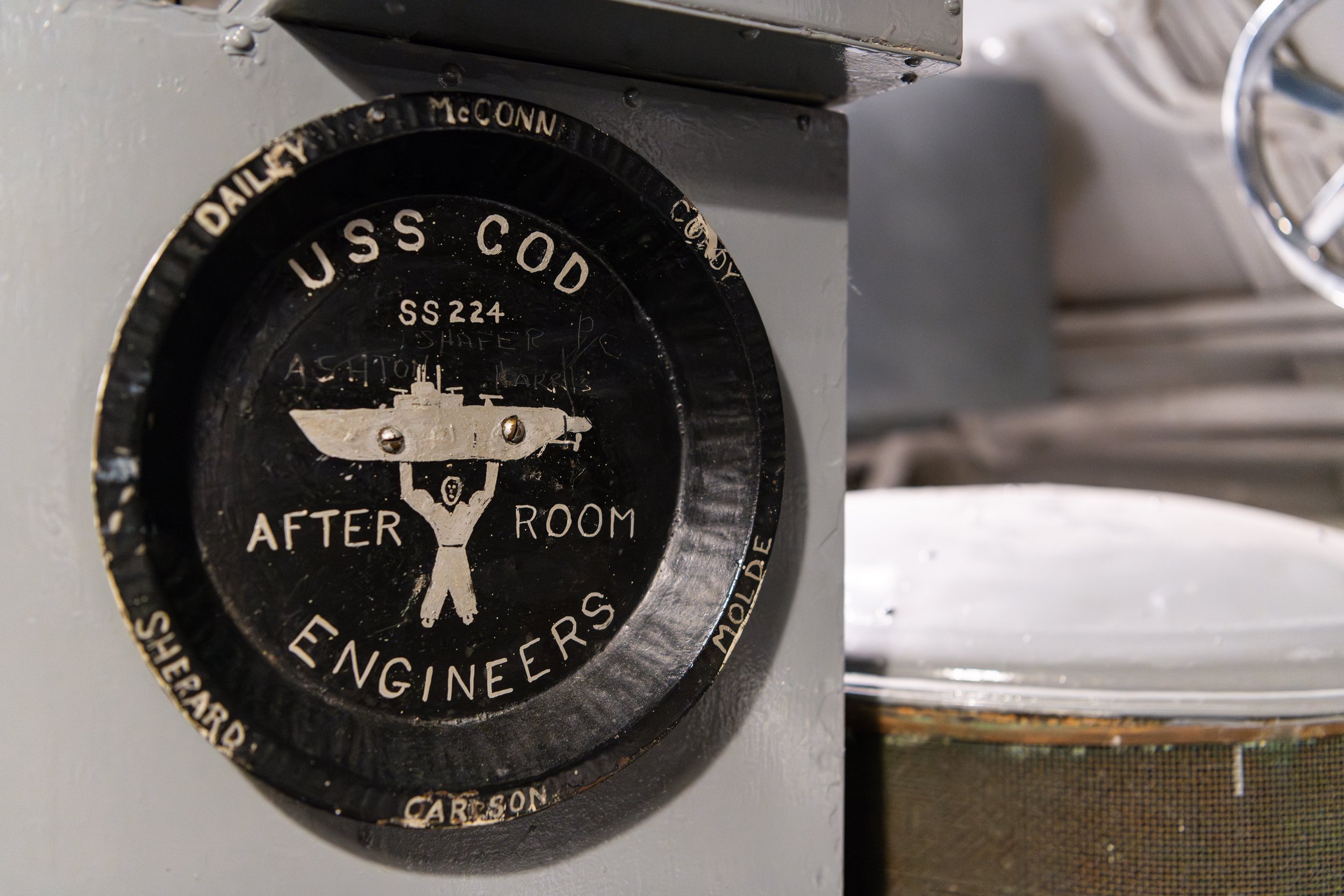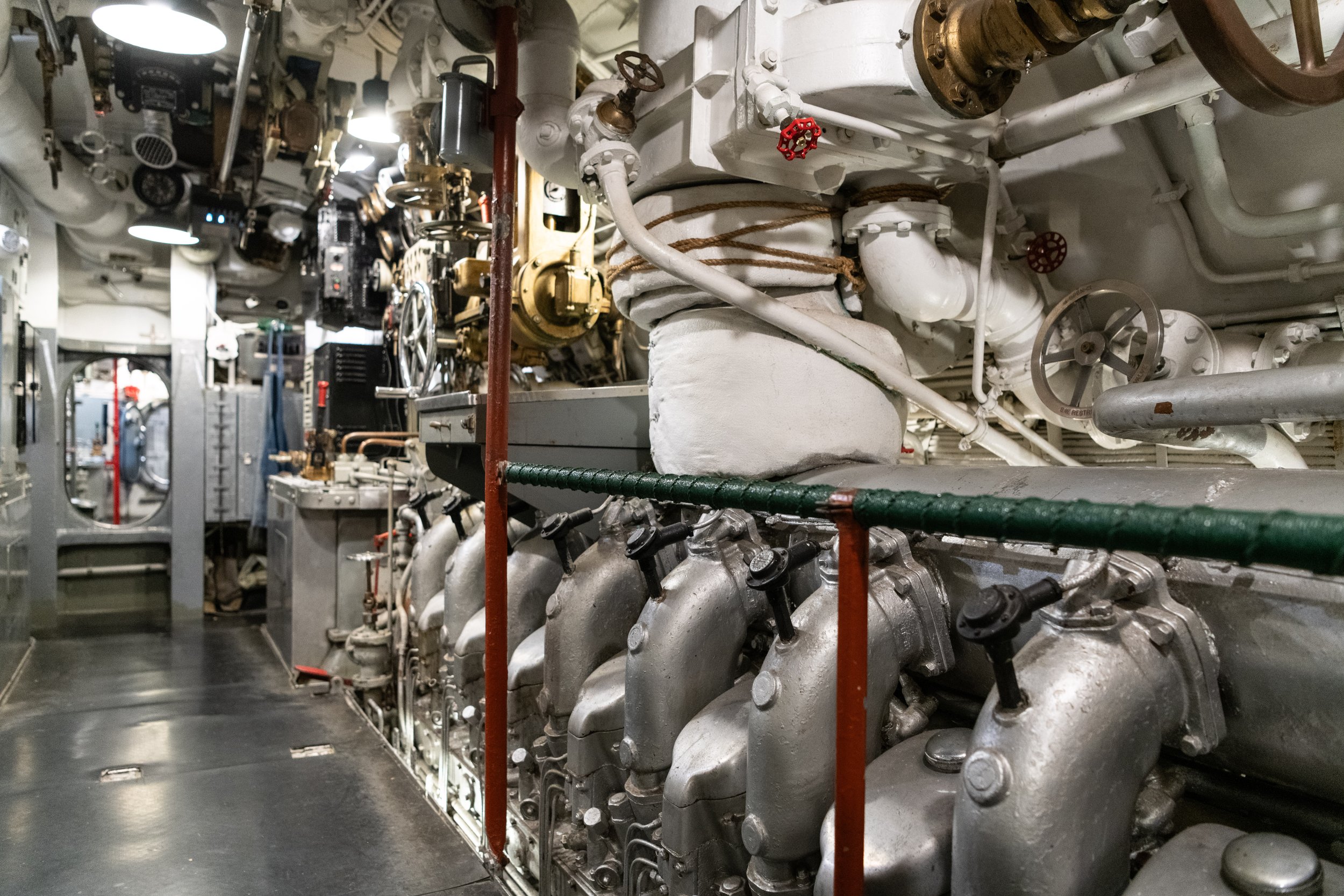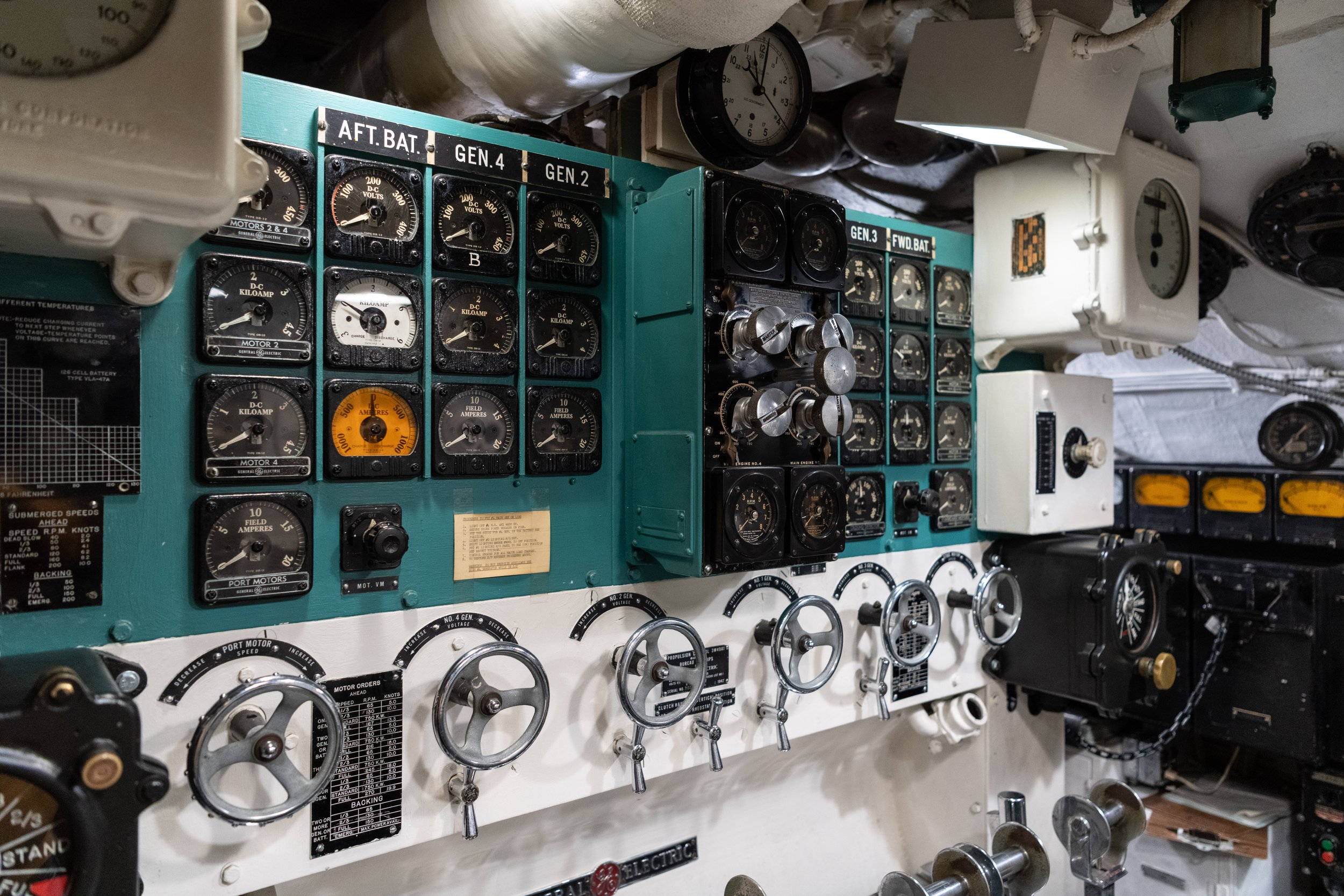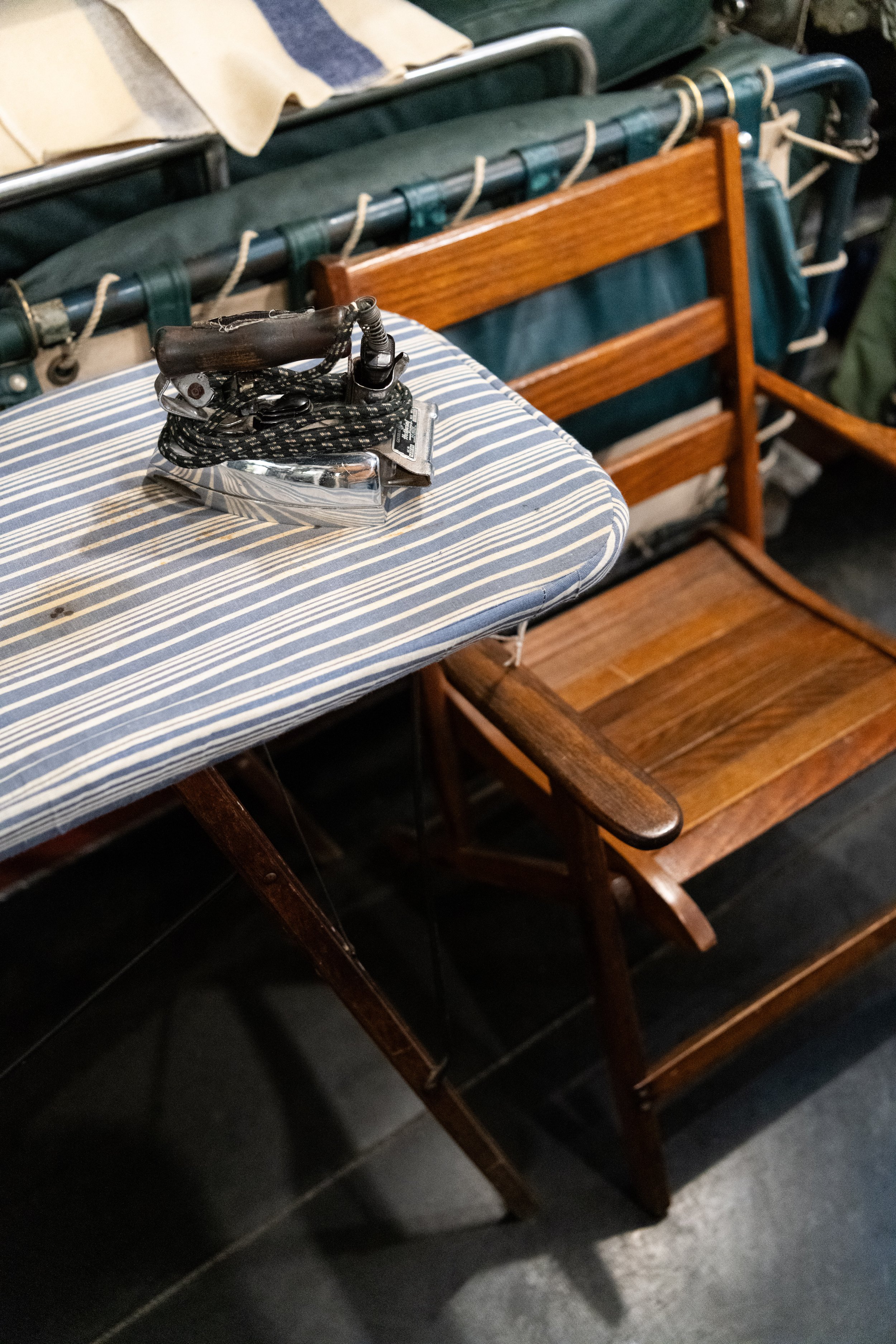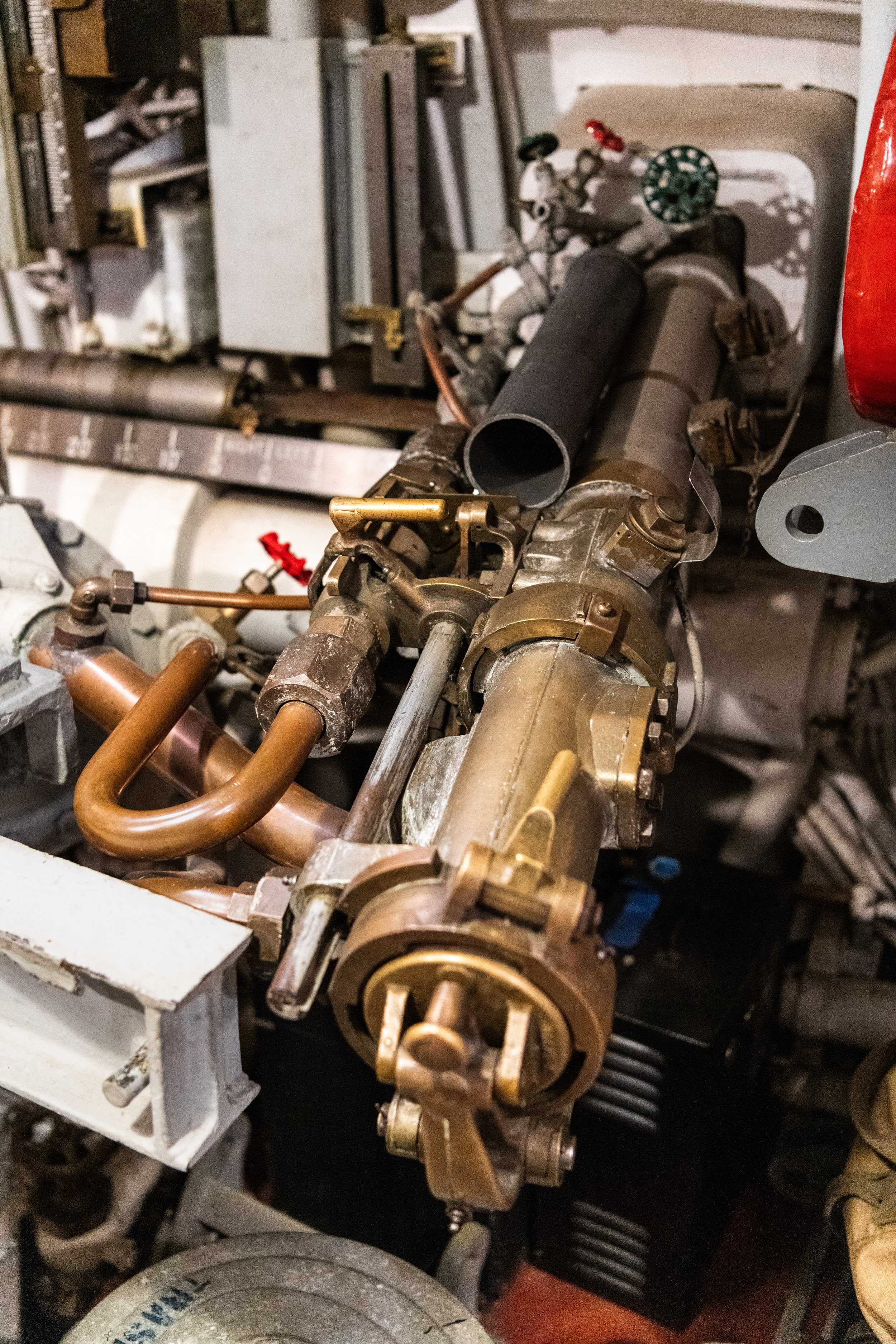Although I spent four years at Ohio University in Athens, OH, I somehow never made it all the way up to Cleveland. I love a good museum ship, and I’ve been on a mission since 2021 to collect signatures from the museum curators of ships which have YouTube channels like the USS New Jersey, the Buffalo Naval Park, etc. So when I found out that I needed to be in-office for a work event and saw Cleveland listed as an option, I decided to make an overnight trip of it and get another curator’s signature on my USS New Jersey hat.
The USS Cod Submarine Memorial, located on the shores of downtown Cleveland, is a Gato-class submarine built during WWII that has called the city home since 1959. Commissioned in June 1943 and struck from the naval register in December 1971, the USS Cod saw a long career during which she attacked Japanese shipping during WWII, rescued the crew of a stranded Dutch submarine, and served as a naval training vessel for reservists. She opened as a museum ship in 1976 and is frankly one of the best-preserved and staged ships I’ve visited.
It was a cold and damp February day when I visited the submarine, and a thin sheet of ice on Lake Erie encased the USS Cod. I met up with Paul Farace, Director of the USS Cod Submarine Memorial, who told me a bit about the boat’s history before we climbed aboard. Paul has been with the boat since the beginning, which puts him in a unique position of retelling the stories he’s obtained from first-hand accounts of Cod’s crew. I spent about 4 hours with Paul as we toured the submarine, though I feel like I could’ve easily spent twice that amount of time listening to all the stories Paul has to tell.
Climbing aboard, our first stop was to take a look at Cod’s 5-inch/25-caliber deck gun. The role of submarines post-WWII saw them spending more time submerged than on the surface, and deck guns like the 5-inch/25-caliber became obsolete. Cod’s deck gun is not original to the submarine - luckily the memorial was able to salvage one after she became a museum ship, returning her to the configuration which fits her period of interpretation (early 1950s). The deck gun would be used to attack targets not worth the expenditure of a torpedo, like the ubiquitous Japanese junks of WWII. Some ready-service ammunition for the deck guns would be stored in watertight compartments outside the pressure hull, but the main ammunition stores existed in a compartment below the crew’s mess. In situations where sustained fire was necessary, or to replenish the ready-service ammunition on deck, a scuttle in the overhead allowed the crew to pass shells up through the pressure hull. Cod used her deck guns to sink 26 junks during the war. This achievement is represented by the sampan stenciled on her mast - the martini glass represents the sailors of the Dutch submarine O-19 which the Cod’s crew rescued in July 1945.
Walking along the deck, you pass over some notable features including concave damage to the deck plates sustained from depth charge attacks and evidence of a glancing blow left by enemy gunfire. I might’ve otherwise missed those details if it weren’t for Paul and the USS Cod’s YouTube channel - they cover the “hidden history” of the ship which you wouldn’t notice upon first glance. For example, hiding below the submarine’s deck is a cradle that was intended to hold a liberty launch during peacetime operations. It would be used to ferry crew between the submarine and shore when it was impractical to bring the entire boat into port. While the liberty launch was removed for wartime service and USS Cod never carried one, the cradle was left in place.
One thing you don’t necessarily realize about these submarines is just how much infrastructure is wedged between the pressure hull and deck. If you take a look to the right of the forward escape trunk below-deck, you can catch a glimpse of the bottles which stored compressed air for the 21-inch torpedo tubes.
Life Aboard The USS Cod
One of the coolest features of the USS Cod isn’t something it has, but rather what it lacks - museum-era modification to make the submarine more “visitor friendly” and accessible. Going below decks is accomplished by climbing through the forward and aft torpedo room escape trunks, just like a submariner would’ve when the USS Cod was in service. The ladders are steep and a bit awkward to use, but it’s a unique experience I’ve never had aboard any other museum ship.
Climbing down the escape trunk deposits you in the forward torpedo room. Here you’ll find berthing spaces for the crew and the submarine’s most powerful weapon, the Mark 14 torpedo. My favorite the thing about the USS Cod is how the museum has done such an amazing job filling the space with artifacts and “signs of life” from the Cod’s crew. Period-correct plates and silverware are set out in the crews’ mess, laundry is hung out to dry in the engine room, drinking glasses sit perched in holders next to sinks, and an apron hangs off a mixer in the galley. It almost feels as if the crew dropped what they were doing in 1950 and went ashore just before you boarded.
As we stood outside the galley, Paul recalled a story involving the submarine’s cook during WWII. George Sacco was a baker from Brooklyn who’d never used a commercial mixer before. The brand-new mixer in Cod’s galley worked fine for awhile but started having problems while the submarine was underway. It turned out the crew had forgot to pack the mixer’s brand-new bearings with grease, causing it to seize up. Luckily it worked just fine after greasing the bearings - it worked so well, in fact, that George quickly ran out of space in the bread locker for all the baked goods he was able to churn out of Cod’s galley. Bread lockers (like the one located beneath a bench seat in the crews’ mess) were used to cool and store bread baked aboard the submarine. The crew eventually built an auxiliary bread locker to keep up with the steady stream of backed goods that George made, which can be seen to your left as you walk through the crews’ mess.
Propulsion, Weapons, and Hidden History
Heading back aft takes you past the officers quarters, through the main berthing compartment, and to the control room where the boat was helmed. An off-tour route stop I made with Paul was the conning tower, situated above the control room. Here you could access the bridge through a hatch in the overhead, peer through the two periscopes, and steer the submarine. Somehow there could be 12 men packed into that tiny space during torpedo actions, steering the ship and calculating courses to attack enemy ships. Both of Cod’s periscopes work, and so does her torpedo data computer.
At the heart of the submarine are 4x V16 diesel engines (built in Cleveland) which generate the horsepower needed to drive the electric motors responsible for propelling the ship when surfaced and for charging the submarine’s 252 lead-acid batteries to be used when submerged. What’s remarkable is that the diesel engines are still operational, like many systems aboard USS Cod. Key components of the propulsion system like the lead-acid batteries and propellers have been removed though, so it won’t be possible to take the submarine out for a pleasure cruise on Lake Erie anytime soon.
Further aft is the maneuvering room where electricians control the power output of the diesel engines, using it to charge batteries or turn the USS Cod’s two propellers. A set of oversized control arms allow engineers to control power input and output, and an engine order telegraph allows the maneuvering room to acknowledge orders from the bridge.
Having watched USS Cod’s YouTube series covering the “hidden history” aboard the submarine, part of my mission was to locate the various items talked about in their videos. I’d already recognized some of them when I went aboard the USS Torsk in Baltimore over the summer. I found the signal flare ejectors (one in aft torpedo room, the other in the control room), the emergency ration boxes located in each compartment, and the crew’s 1941 Sears & Roebuck ironing board.
So far I’ve collected Ryan’s autograph from the Battleship New Jersey, Drachinifel, and Paul’s autograph from the USS Cod. I think my next stop will be the Buffalo Naval Park so I can get Shane’s autograph on my hat - stay tuned for a future update!


